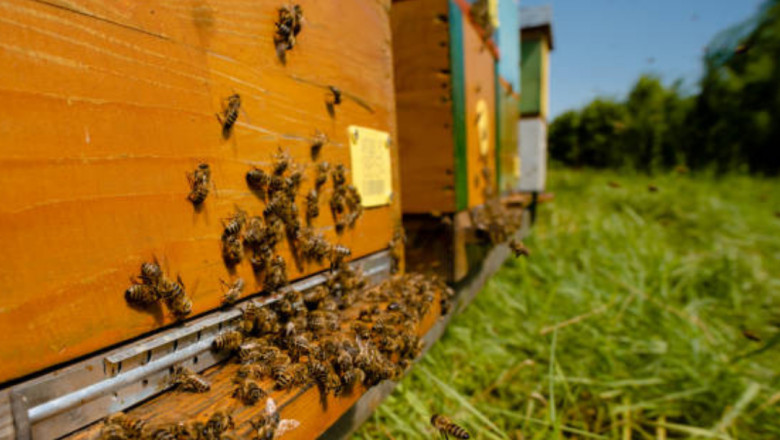views
Bee infestations are more than just a nuisance—they pose serious safety risks, especially when hives are located near homes or businesses. While professional removal is often the best solution, many property owners still have one pressing concern: Do bees return after removal? The short answer is—they can. However, with proper follow-up and prevention strategies, recurrence can be minimized or completely avoided. In this guide, we’ll break down why bees might come back, what signs to watch for, and most importantly, how to prevent repeat infestations effectively and humanely.
Why Do Bees Return After Removal?
Even after a professional bee removal job, bees can return to the same location for several reasons. The most common is pheromone trails left behind by the original hive. These scent markers can remain embedded in walls, attics, or trees, drawing new swarms during peak seasons. Additionally, if remnants of the old hive—like honeycombs or wax aren’t completely cleared out, they can attract other bees seeking a ready-made home. To fully eliminate the risk, it’s crucial to go beyond surface-level removal and address all environmental cues that make your property attractive to bees in the first place.
Incomplete Hive Removal Can Lead to Recurrence
A common reason bees return is due to incomplete hive extraction. Sometimes, homeowners or inexperienced pest control providers remove only the visible portion of the hive without realizing that much of it could be hidden inside walls, roofing, or trees. These remnants can sustain pheromone signals for months. Over time, wandering scout bees may pick up these signals and guide a new swarm back to the same spot. To prevent this, thorough removal, followed by structural repair and proper cleaning, is essential. When dealing with larger structures or commercial buildings, it’s wise to consult a trusted commercial bee removal service in Los Angeles, California that specializes in both extraction and prevention.
Understanding Bee Foraging, Memory, and Navigation
Bees are intelligent navigators with an incredible sense of direction and memory. Once a hive is established, forager bees can memorize landmarks and fly several miles away and still return accurately to the same location. This homing ability is a major reason why bees return even after removal. If the site is left untreated and still emits familiar scents, those bees might come back and attempt to rebuild. That’s why part of successful bee control involves not just removing the hive, but also neutralizing the area with odor removers, sealing entry points, and modifying the space to disrupt their visual cues.
How to Prevent Bees from Returning
Preventing future infestations requires a combination of sanitation, sealing, and smart landscaping. First, all hive residues must be removed, and the affected area cleaned with a bee-safe enzyme cleaner that destroys pheromones. Next, seal all potential entry points—cracks in siding, holes in eaves, gaps around vents—with durable materials. If the original hive was in a tree or outdoor structure, consider using mesh or caulking to close it off completely. Landscaping also matters: avoid planting too many flowering shrubs close to buildings, and keep trash bins tightly closed to avoid attracting scout bees. These steps make your property far less welcoming to future swarms.
The Role of Seasonal Swarming in Recurrence
Even when a hive is successfully removed, the surrounding environment may still appeal to bees during swarming season. Spring and early summer are prime times when new colonies are formed, and swarms seek suitable nesting sites. If your property has a history of infestations, there’s a higher chance bees return during these months. That’s why timing and follow-through are everything. Scheduling removal services outside of peak swarming windows can help minimize risk. Also, routine inspections during swarm season ensure you catch any early signs before a full colony settles in again.
When to Consider Long-Term Professional Monitoring
For properties in high-risk areas—especially those with flowering landscapes, orchards, or structures with previous hives—long-term monitoring might be necessary. Some bee control companies offer seasonal checkups or install bait traps to monitor bee activity. These preventative measures help detect early warning signs before another colony settles. Investing in regular inspections ensures that any potential return of bees is managed promptly and humanely. For commercial buildings and public spaces, long-term solutions are often more cost-effective than repeated emergency removals. If you’re in a region prone to bee activity, consider incorporating ongoing monitoring into your property maintenance routine.
Final Thoughts
In conclusion, bees return mainly due to lingering scent trails, incomplete hive removal, or appealing nesting environments. While their homing ability is impressive, it can be disrupted with proper post-removal sanitation, environmental modifications, and entry-point sealing. To truly stop recurrence, removal is only part of the solution—preventive strategies and ongoing vigilance are equally crucial. Whether you’re a homeowner or manage a commercial property, staying proactive is the key to keeping bees from coming back.














Comments
0 comment